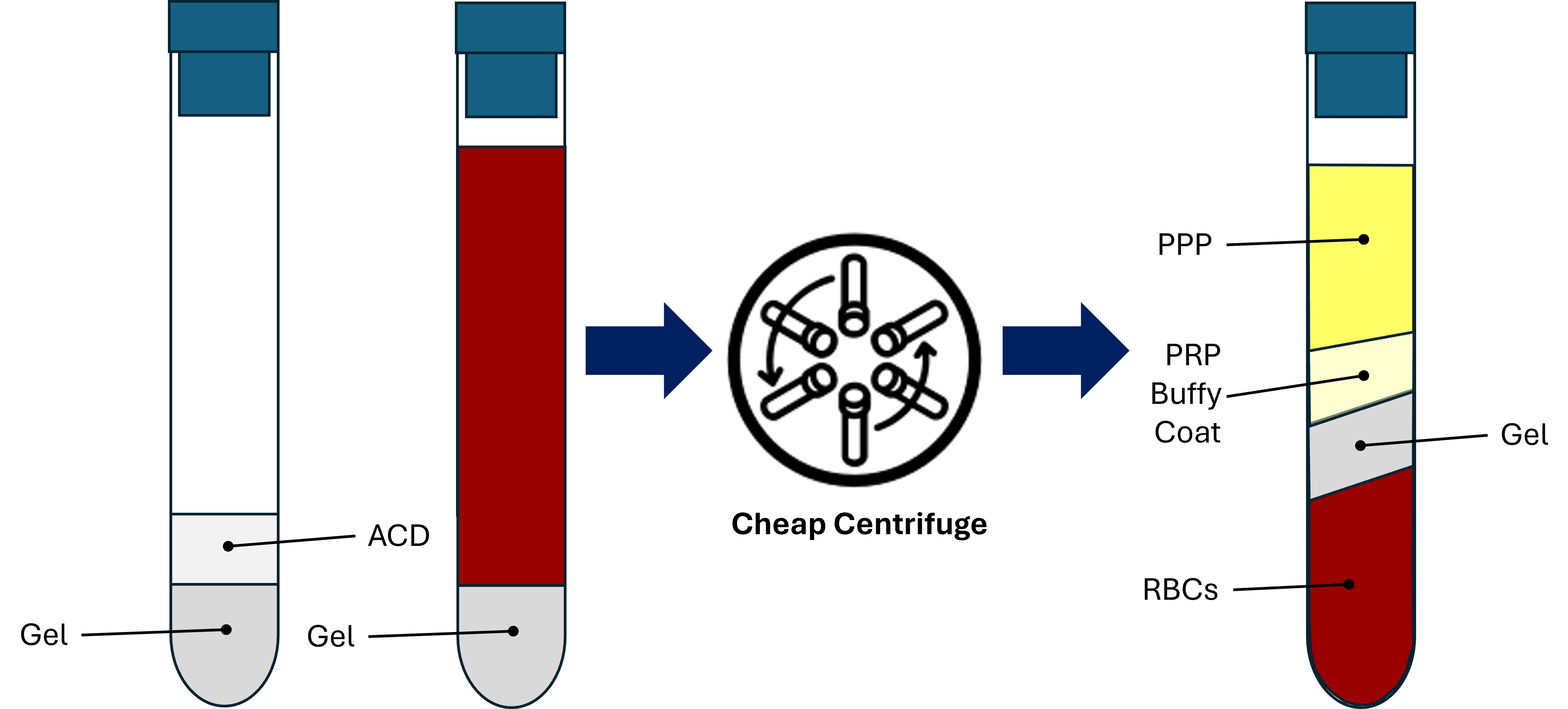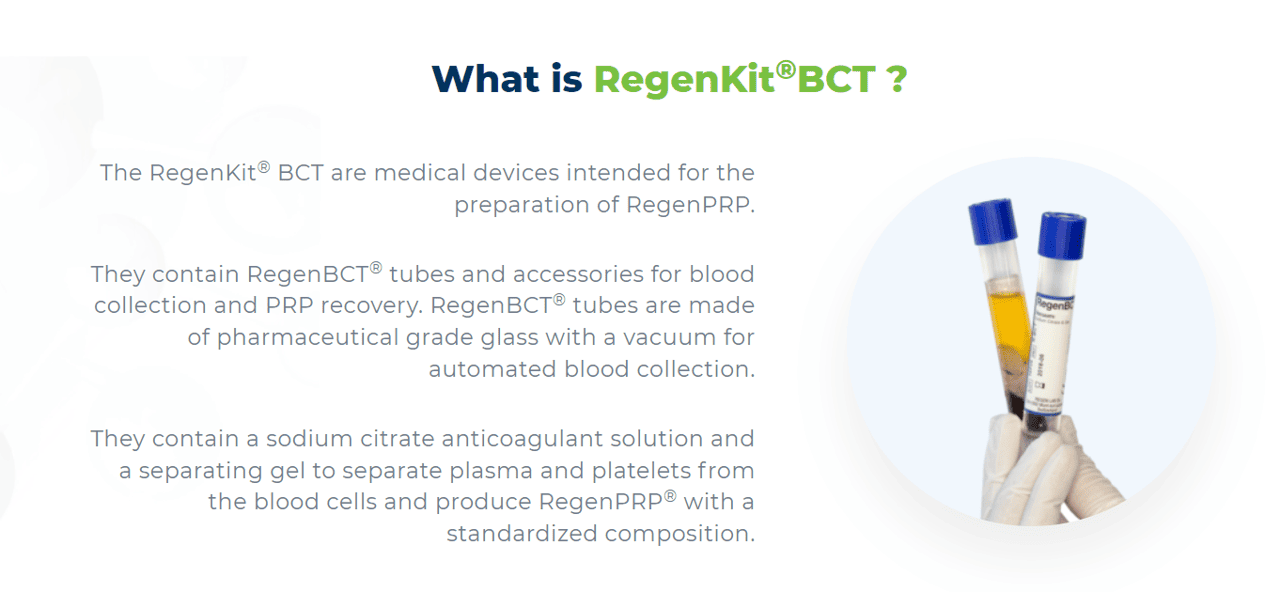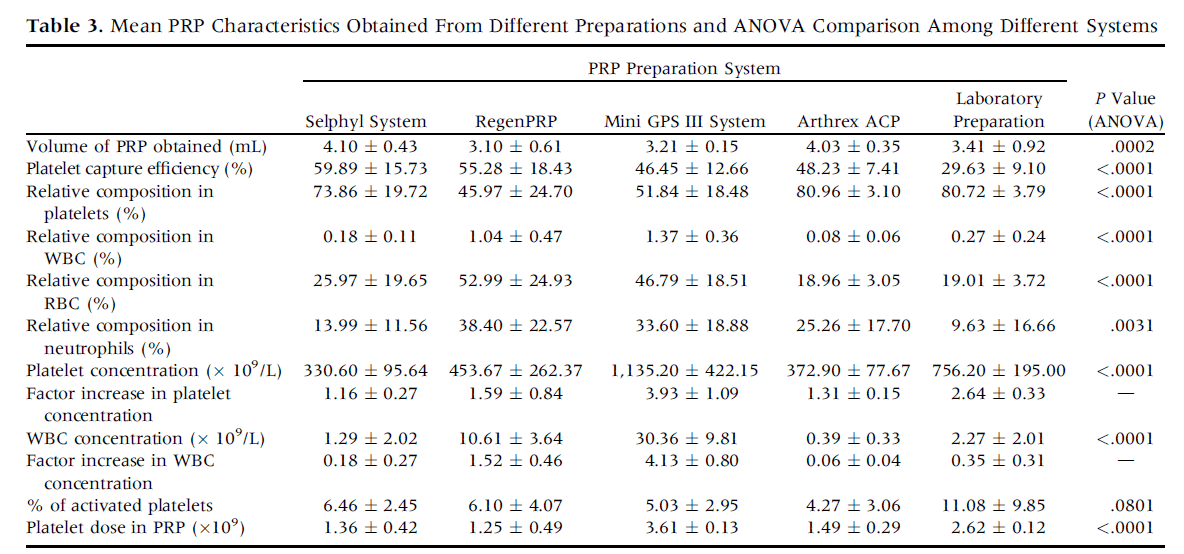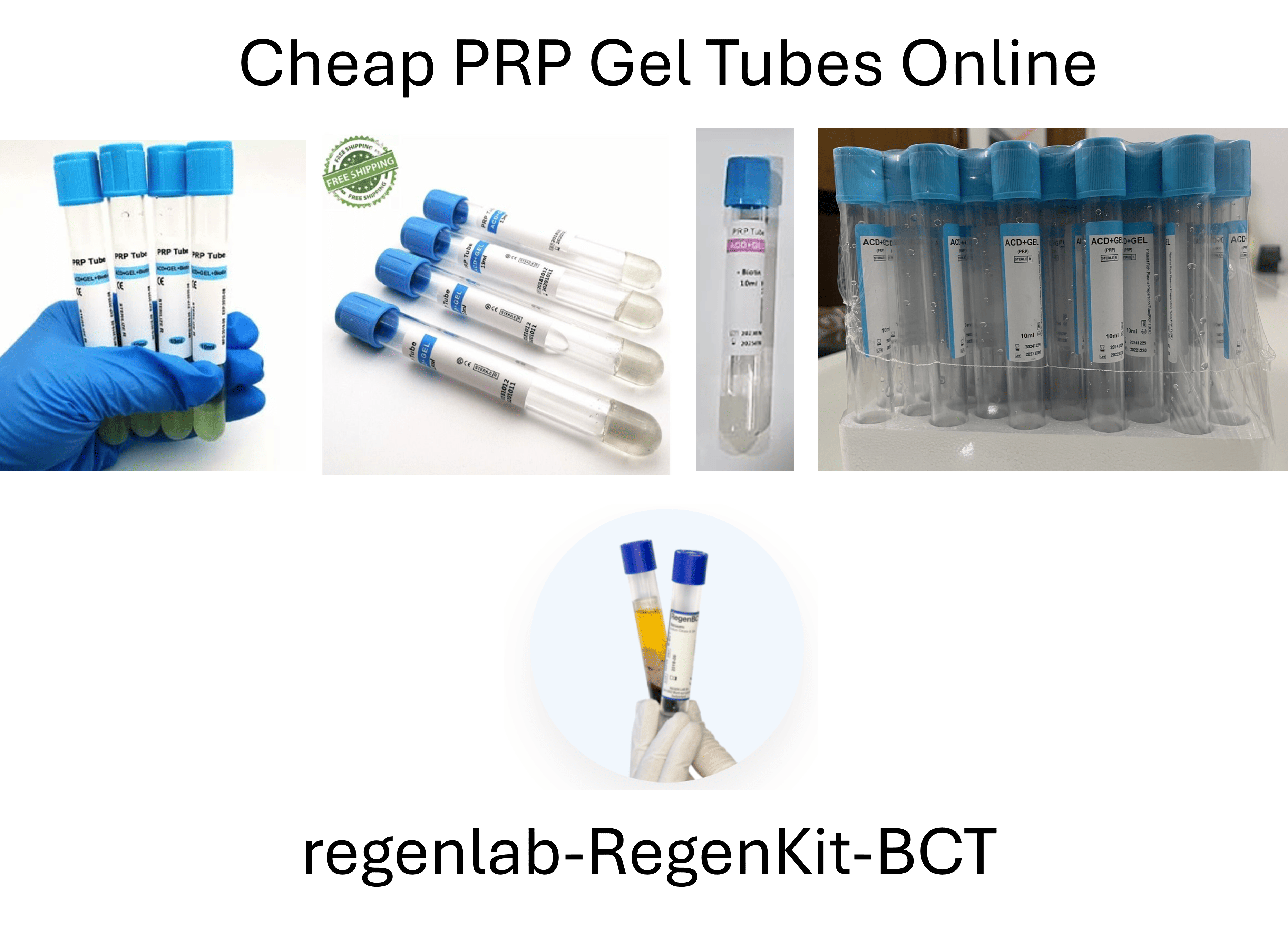The Great PRP Gel Tube Caper

What Is a PRP Gel Tube?

If you’re a musculoskeletal provider using real PRP kits, you may have never encountered a PRP Gel Tube or seen one in use. Basically, they all have the following components:
- A vacutainer or similar
- An inert gel
- ACD anticoagulant
They are used by drawing PRP directly into an 8-12 ml vacutainer and then placing that tube in a centrifuge for a low-g (soft spin). That soft spin allows them to be used in cheaper, less sophisticated centrifuges. The gel acts as a way to get the lighter platelets to stay above the gel while the heavier RBCs and nucleated cells fall through that layer. You then either place a long needle in the centrifuged tube or invert the device and attach a syringe while you attempt to draw out the platelet buffy coat layer.
How Well Does This PRP Method Work?

The best research on how well this concept works was performed by Magalon et al. (1). They tested the “RegenLab” kits used commonly in Europe, which use this PRP gel tube format. Below are their results:

You get, on average, about three cc of 1.6X “PRP” and leave about half of the platelets in the tube (55% platelet capture). I have PRP in quotes here because this is well below the thresholds described by Marx et al. as the minimum concentration for PRP (2X or 5X) (2-4). More on that discussion here.
Also, note that the “PRP” produced (relative to the others tested in this paper) is relatively rich in RBCs and WBCs or “Leukocyte-Rich.” IMHO this is likely because the soft spin isn’t enough to get all of the larger cells to migrate away from the platelets. The poor platelet recovery also likely happens due to trapping a good portion of the platelets in the gel and the fact that the simple system has no way to make it easy for the user to separate the platelet-rich buffy coat from other layers.
Why Are PRP Gel Tubes Substandard?
They don’t produce a product that meets the minimum definition of PRP and, in fact, produce a slight platelet and leukocyte-enriched plasma that in my analysis has been associated with clinical trial failure. Why does using this low platelet plasma or substandard PRP produce poor results? In-vitro research shows that in middle-aged and older patients, this platelet concentration isn’t high enough to produce cell proliferation and healing (5).
Why Do Clinics Use PRP Gel Tubes if They Produce an Inferior End Product?
It’s all about the bucks, baby. I went online and did a Google search for PRP Gel Tube, and this is what I found:
- $11.95 each on Ebay (pack of 20-Chinese knockoff unbranded)
- $3.30 each on Ebay (pack of 100-Chinese knockoff unbranded)
- $21.31 on Etsy (Single private labeled)
- $8.00 each on Amazon (pack of 10-Chinese knock-off (unbranded)
How much does a real PRP kit run that can produce at least 5X PRP? Usually somewhere between $200-400.
Interestingly, in my opinion, many of these cheap knockoff tubes look a lot like the branded RegenLab tubes:

Are they the same? Unsure.
Why Would a Patient Allow Themselves to Be Injected With Substandard PRP From a Gel Tube Kit?
Patients don’t know the difference. They also haven’t received enough consumer reports type knowledge on PRP to ask the right questions.
Which Clinic Types Use These PRP Gel Tubes?
Most cosmetic dermatology, hair restoration, and cosmetology practices in the US use these cheap PRP kits. I have also seen them used in practices that advertise age management and throw their hat in the ring of injecting knees and any other area where their patients report pain. Finally, I have noted that a few orthopedic clinics also use them.
How to Avoid this problem If You’re the Patient
Ask them to show you the kit they will use to process your blood! If it’s the same small tube that they use to draw the blood, then ask for your money back and leave.
You can also figure this out by volume. For example, if you’re middle-aged or older and have knee arthritis, the end volume that gets injected will be around 2-3 ml. You would need somewhere between 10-15X PRP in the joint, so multiply 3 ml x 15 to get 45 ml of blood drawn. Then you multiply by a platelet capture efficiency number, which for most low-quality kits is 50%, meaning you would need to double the blood requirements. Hence, the total blood draw would be 45 ml X 2=90 ml. So, if the clinic you’re going to isn’t planning on drawing around 90 ml of blood to inject 3 ml in your knee, then find a new clinic.
You can also multiply the amount they intend to inject by a factor of 20-30 to get a rough idea if you’re getting scammed. For example, if they want to inject 3 ml in both knees for a total of 6 ml of PRP and they aren’t taking at least 120 ml of blood, then find another clinic. If they have no idea what you’re talking about (how much they intend to inject in which joint vs. how much they need to draw), then find another clinic.
The upshot? The “PRP” gel tube caper is alive and well and likely constitutes half of all PRP offered if you broaden that scope to include hair loss and cosmetics. Hopefully, you won’t fall for this substandard PRP now that you’re educated!
_______________________________________________________________
References:
(1) Magalon J, Bausset O, Serratrice N, Giraudo L, Aboudou H, Veran J, Magalon G, Dignat-Georges F, Sabatier F. Characterization and comparison of 5 platelet-rich plasma preparations in a single-donor model. Arthroscopy. 2014 May;30(5):629-38. doi: 10.1016/j.arthro.2014.02.020. PMID: 24725317.
(2) Marx RE, Carlson ER, Eichstaedt RM, Schimmele SR, Strauss JE, Georgeff KR. Platelet-rich plasma: Growth factor enhancement for bone grafts. Oral Surg Oral Med Oral Pathol Oral Radiol Endod. 1998 Jun;85(6):638-46. doi: 10.1016/s1079-2104(98)90029-4. PMID: 9638695.
(3) Marx RE. Platelet-rich plasma (PRP): what is PRP and what is not PRP? Implant Dent. 2001;10(4):225-8. doi: 10.1097/00008505-200110000-00002. PMID: 11813662.
(4) Marx RE. Platelet-rich plasma: evidence to support its use. J Oral Maxillofac Surg. 2004 Apr;62(4):489-96. doi: 10.1016/j.joms.2003.12.003. PMID: 15085519.
(5) Berger DR, Centeno CJ, Steinmetz NJ. Platelet lysates from aged donors promote human tenocyte proliferation and migration in a concentration-dependent manner. Bone Joint Res. 2019 Feb 2;8(1):32-40. doi: 10.1302/2046-3758.81.BJR-2018-0164.R1. PMID: 30800297; PMCID: PMC6359887.
If you have questions or comments about this blog post, please email us at [email protected]
NOTE: This blog post provides general information to help the reader better understand regenerative medicine, musculoskeletal health, and related subjects. All content provided in this blog, website, or any linked materials, including text, graphics, images, patient profiles, outcomes, and information, are not intended and should not be considered or used as a substitute for medical advice, diagnosis, or treatment. Please always consult with a professional and certified healthcare provider to discuss if a treatment is right for you.